
The Unwritten History Of Australia
Chapter 24
|
Did Spaniards Settle
Australia
|
"And navigation towards the east, they say there
lies the land of Piccinacoli *, and many believe
that this land is connected towards the east
in the south with the coast of Bresil, or Verzino **,
because on account of the size of this land
of Verzino, it is not yet on all sides discovered".
Andrew Corsali,
writing from Cochin, China
6th january, 1515.
{*New Guinea **Australia}
|
Chapter
24 Images
|
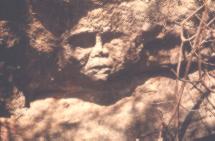
|
Mystery Rock-Face by Rex Gilroy
Discoveries of relics, wrecks and rock inscriptions along the rugged Australian coastline, speak of unknown contacts with our shores by mariners from Portugal and Spain, a century and more before the arrival of the first Dutchman. Spanish relics seem the most numerous. For example; during the 1920's bushwalkers on Stephens Island, 68km south of Cairns, in far north Queensland, and 5km off the mainland, stumbled upon a stone Peruvian idol, decorated in old Castillian jewellery, half buried in dense jungle undergrowth.
About this time, in a cave on Prince of Wales Island, and 60km west of Cape York, Queensland, a man found a huge rusty broadsword bearing finely engraved Castillian designs. Nearby, to his dismay, he found a crumbling human skeleton beside a gold goblet. Many years ago, Aborigines on Murray Island, 165km north-west of Cape York, were found to possess light-coloured skins with definite Latin features and to use Spanish words in everyday language.
While in Ingham, 83km up the coast from Townsville, a farmer ploughed up three-and-a-half swords, all of Castillian design and one with a highly embossed hilt.
Also near Proserpine, 225km down the coast from Townsville, another Spanish sword has since been discovered. During the 1930's and old crumbling human skeleton was found, laid out upon a sandstone crevice in a deep rock shelter in the mountains behind Mackay.
It was clothed in a morrion helmet and breastplate. Also in the 1930's, two other human skeleton's clothed in Spanish armour were found preserved in a cave behind Cooktown beach. Even in recent times, many 16th century coins have been found, washed up on a Cooktown beach. Some locals claim the coins come from the remains of a Spanish vessel wrecked offshore.
|
Pyramids
in the Pacific Images
Ch 24
|
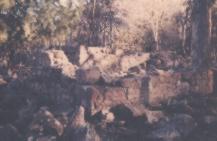
|
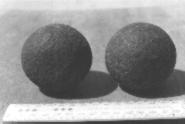
|
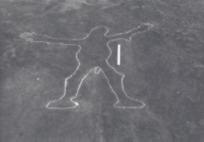
|
|
Stone Fort Ruins |
Spanish Cannonballs |
Girakool Spaniard |
Many of the relics found along the Queensland coast and offshore islands, have been linked to 16th and 17th century pirates. Some researchers believe that at various times, Spanish and French pirates used the Great Barrier Reef islands and locations along the Queensland coast as bases from where they preyed upon Spanish treasure galleons.
It might be possible that millions of dollars in plundered Spanish gold and other treasure, still lies forgotten, buried in lost caves and on the islands. Mystery surrounds a crumbling, large stone structure standing in a remote area of Arnhem Land.
Some old Castillian relics, including a morrion helmet found there suggest the ruins may be the remains of a 16th century Spanish fort. There are also indications the area was worked for gold in pre-British times. Aborigines of the area periodically hold a corroboree, a re-enactment of apparent Spanish soldiers arriving on the coast in centuries past.
The dancers wear 'armour'-bark sheets for breastplates and helmets of the same material-and carry thick sticks for muskets and re-enact Spaniards landing on the shore and engaging in a fight with tribesmen, who kill some and drive the others back into the water.
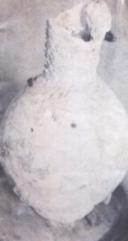
|
|
Spanish Wine Jar |
Sometimes, among Spanish relics recovered at sites in Arnhem Land, north Queensland and elsewhere, a few Peruvian trinkets have also turned up, suggesting slaves accompanied the Conquistadores in their search for precious metals, as they did elsewhere.
Traces of of long-term Spanish settlement occur at mineral-bearing locations in Queensland and New South Wales, and there may also have been an attempt to establish a colony in the Central Coast/ Hawkesbury district, north/north-west of Sydney, in the mid-16th century; and a settlement may also have been attempted in Botany Bay, generations before the arrival of Captain Cook!
The evidence I now present to my mind, leaves little doubt that Spain came close to successfully colonising and claiming Australia.

|
Latin Shorthand